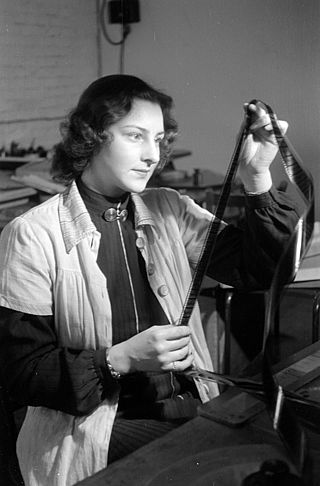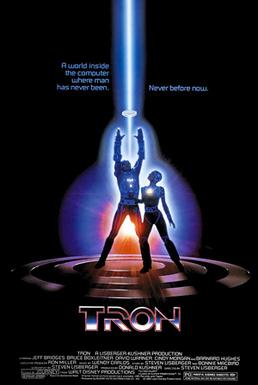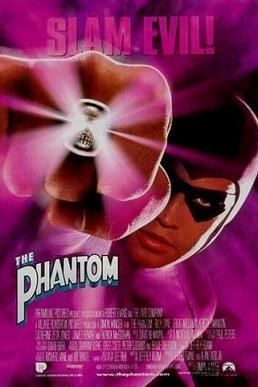
A script breakdown is an intermediate step in the production of a play, film, comic book, or any other work that is originally planned using a script.

A script breakdown is an intermediate step in the production of a play, film, comic book, or any other work that is originally planned using a script.
In film and television, a script breakdown is an analysis of a screenplay in which all of the production elements are reduced into lists. Within these lists, are in essence the foundation of creating a production board, which is fundamental in creating a production schedule and production budget of an entire production of any film or television program in pre-production. [1] This process is a very tedious and complex task, and is usually the responsibility of the Assistant Director or first or 1AD within the production staff of any given production company. However, many film directors and film producers have knowledge of breaking down a script.[ citation needed ]
In particular, literally breaking down the script is a very a thorough and detailed creative analysis of dramatic action in filmmaking, highlighting the reciprocal struggle, theme, and design elements of a screenplay. Which is to code the entire cast, extras, props, special effects, stunts, wranglers, picture cars, [2] wardrobe, make-up and hair stylists, special equipment and or cameras, ADR, Foley, film scores and soundtracks etc., which are all broken-down with different colored marker highlights within a shooting script. [1]
After which, these highlights are then organized and broken-down into strips to organize the production schedule within the actual physical production board. This process is more easily done nowadays utilizing a computer than done manually, with features inside Final Draft called tagger, or utilizing tagging mode inside Movie Magic Screenwriter, another effective computer program. [3] This information can easily be imported over to Movie Magic Scheduling to create a digital production board, and then easily imported over to Movie Magic Budgeting to create the entire production budget. Most of the script and production computer software out there comes in both Microsoft and MacOS versions, and even though there is competing software on the market, these which are listed are considered to be an entertainment industry standard. This whole process of the script breakdown [4] however is not to be confused with character breakdowns utilized with casting calls, this is an entire different process with similar names, however administered by two entirely separate departments. [5]
To ease future production, an assistant director marks the elements found in each scene. This process repeats for each new scene. By the end, the producer will be able to see which scenes need which elements, and can begin to schedule accordingly. The film industry has a standard for color-coding: [6]
| Element | Shape or color | Description | |
|---|---|---|---|
| Cast | Red | Any speaking actor | |
| Stunts | Orange | Any stunt that may require a stunt double, or stunt coordinator. | |
| Extra (silent) | Yellow | Any extra needed to perform specifically, but has no lines. | |
| Extra (atmosphere) | Green | Any extra or group of extras needed for the background. | |
| Special effects | Blue | Any special effect required. | |
| Props | Purple | All objects important to the script, or used by an actor. | |
| Vehicles and animals | Pink | Any vehicles, and all animals, especially if it requires an animal trainer. | |
| Sound effects or music | Brown | Sounds or music requiring specific use on set. Not sounds added in during post. | |
| Wardrobe | ⭘ | Circle | Specific costumes needed for production, and also for continuity if a costume gets ripped up, or dirtied throughout the production. |
| Make-up and hair | ⁎ | Asterisk | Any make-up or hair attention needed. Common for scars and blood. |
| Special equipment | ◻ | Box | If a scene requires the use of more uncommon equipment, (e.g. crane, underwater camera). |
| Production notes | _ | Underline | For all other questions about how a scene will go, or confusion about how something happens. |
In comic books, it is the process of determining how each action, character, and piece of dialogue described in the script will be placed visually on a page. In the studio system that dominated mass-market comic-book production from the 1940s through the 1970s, breakdowns were done by the penciller or by a separate breakdown artist, rarely by the scriptwriter; in some cases, breakdowns were done from a rough story outline before the dialogue was written (the "Marvel method"). Later comics writers such as Alan Moore and Neil Gaiman, influenced by cinematic technique, began to include more layout details within their scripts. Cartoonists who both write and draw their own work sometimes begin with a script and do their own breakdowns, and sometimes work through drawings without a separate script.[ citation needed ]

Film editing is both a creative and a technical part of the post-production process of filmmaking. The term is derived from the traditional process of working with film which increasingly involves the use of digital technology. When putting together some sort of video composition, typically, you would need a collection of shots and footages that vary from one another. The act of adjusting the shots you have already taken, and turning them into something new is known as film editing.
A film crew is a group of people, hired by a production company, for the purpose of producing a film or motion picture. The crew is distinguished from the cast, as the cast are understood to be the actors who appear in front of the camera or provide voices for characters in the film. The crew is also separate from the producers, as the producers are the ones who own a portion of either the film studio or the film's intellectual property rights. A film crew is divided into different departments, each of which specializes in a specific aspect of the production. Film crew positions have evolved over the years, spurred by technological change, but many traditional jobs date from the early 20th century and are common across jurisdictions and filmmaking cultures.

A storyboard is a graphic organizer that consists of illustrations or images displayed in sequence for the purpose of pre-visualizing a motion picture, animation, motion graphic or interactive media sequence. The storyboarding process, in the form it is known today, was developed at Walt Disney Productions during the early 1930s, after several years of similar processes being in use at Walt Disney and other animation studios.
A screenplay, or script, is a written work by screenwriters for a film, television show, or video game. A screenplay written for television is also known as a teleplay. Screenplays can be original works or adaptations from existing pieces of writing. A screenplay is a form of narration in which the movements, actions, expressions and dialogue of the characters are described in a certain format. Visual or cinematographic cues may be given, as well as scene descriptions and scene changes.
A film producer is a person who oversees film production. Either employed by a production company or working independently, producers plan and coordinate various aspects of film production, such as selecting the script, coordinating writing, directing, editing, and arranging financing.

Tron is a 1982 American science fiction action adventure film written and directed by Steven Lisberger from a story by Lisberger and Bonnie MacBird. The film stars Jeff Bridges as Kevin Flynn, a computer programmer and video game developer who is transported inside the software world of a mainframe computer where he interacts with programs in his attempt to escape; it also stars Bruce Boxleitner, David Warner, Cindy Morgan, and Barnard Hughes. Tron, along with The Last Starfighter, has the distinction of being one of cinema's earliest films to use extensive computer-generated imagery (CGI).
Pre-production is the process of planning some of the elements involved in a film, television show, play, or other performance, as distinct from production and post-production. Pre-production ends when the planning ends and the content starts being produced.

Traditional animation is an animation technique in which each frame is drawn by hand. The technique was the dominant form of animation in cinema until the end of the 20th century, when there was a shift to computer animation in the industry, specifically 3D computer animation.
A penciller is an artist who works on the creation of comic books, graphic novels, and similar visual art forms, with a focus on the initial pencil illustrations, usually in collaboration with other artists, who provide inks, colors and lettering in the book, under the supervision of an editor.
Filmmaking or film production is the process by which a motion picture is produced. Filmmaking involves a number of complex and discrete stages, beginning with an initial story, idea, or commission. Production then continues through screenwriting, casting, pre-production, shooting, sound recording, post-production, and screening the finished product before an audience, which may result in a film release and exhibition. The process is nonlinear, as the director typically shoots the script out of sequence, repeats shots as needed, and puts them together through editing later. Filmmaking occurs in a variety of economic, social, and political contexts around the world, and uses a variety of technologies and cinematic techniques to make theatrical films, episodic films for television and streaming platforms, music videos, and promotional and educational films.

Principal photography is the phase of producing a film or television show in which the bulk of shooting takes place, as distinct from the phases of pre-production and post-production.

In the performing arts industry such as theatre, film, or television, casting, or a casting call, is a pre-production process for selecting a certain type of actor, dancer, singer, or extra for a particular role or part in a script, screenplay, or teleplay. This process may be used for a motion picture, television program, documentary film, music video, play, or advertisement, intended for an audience.
The set decorator is the head of the set decoration department in the film and television industry, responsible for selecting, designing, fabricating, and sourcing the "set dressing" elements of each set in a Feature Film, Television, or New Media episode or commercial, in support of the story and characters of the script. The set decorator is responsible for each décor element inside the sets, from practical lighting, technology, art, furniture, drapery, floor coverings, books, collectables, to exterior furnishings such as satellite dishes, Old West water troughs, streetlamps, traffic lights, garden furniture and sculptures.

Virtual cinematography is the set of cinematographic techniques performed in a computer graphics environment. It includes a wide variety of subjects like photographing real objects, often with stereo or multi-camera setup, for the purpose of recreating them as three-dimensional objects and algorithms for the automated creation of real and simulated camera angles. Virtual cinematography can be used to shoot scenes from otherwise impossible camera angles, create the photography of animated films, and manipulate the appearance of computer-generated effects.
Film budgeting refers to the process by which a line producer, unit production manager, or production accountant prepares a budget for a film production. This document, which could be over 130 pages long, is used to secure financing for and lead to pre-production and production of the film. Multiple drafts of the budget may be required to whittle down costs. A budget is typically divided into four sections: above the line, below the line, post-production, and other. The budget excludes film promotion and marketing, which is the responsibility of the film distributor. Film financing can be acquired from a private investor, sponsor, product placement, film studio, entertainment company, and/or out-of-pocket funds.
Previsualization is the visualizing of scenes or sequences in a movie before filming. It is a concept used in other creative arts, including animation, performing arts, video game design, and still photography. Previsualization typically describes techniques like storyboarding, which uses hand-drawn or digitally-assisted sketches to plan or conceptualize movie scenes.
A production board, stripboard, or production strip is a filmmaking term for a chart displaying color-coded strips of paper, each containing information about a scene in the film's shooting script. The strips can then be rearranged and laid out sequentially to represent the order one wants to film in, providing a schedule that can be used to plan the production. This is done because most films are shot "out of sequence," meaning that they do not necessarily begin with the first scene and end with the last. For logistical purposes, scenes are often grouped by talent or location and are arranged to accommodate the schedules of cast and crew. A production board is not to be confused with a stripboard used for electronics prototyping.

The Phantom is a 1996 superhero film directed by Simon Wincer. Based on Lee Falk's comic strip The Phantom by King Features, the film stars Billy Zane as a seemingly immortal crimefighter and his battle against all forms of evil. The Phantom also stars Treat Williams, Kristy Swanson, Catherine Zeta-Jones, James Remar and Patrick McGoohan. The film's screenplay by Jeffrey Boam is loosely inspired by three of The Phantom stories, "The Singh Brotherhood", "The Sky Band" and "The Belt", but adds supernatural elements and several new characters.
Screenwriting software are word processors specialized to the task of writing screenplays.

FiveSprockets was a web-based software company based in San Diego, California, United States focused on developing resources, social networking, and web-based collaborative software for scriptwriting, filmmaking and digital-video production. The name FiveSprockets came from the five phases, or sprockets, of media production: (1) Story Development & Scriptwriting; (2) Pre-production; (3) Production; (4) Post-production; and (5) Marketing & Distribution. Founded in 2007 by CEO Randy Ullrich, FiveSprockets launched its Beta Release in September 2008 with an initial focus on social networking, educational content, and web-based software for screenwriting and production management.